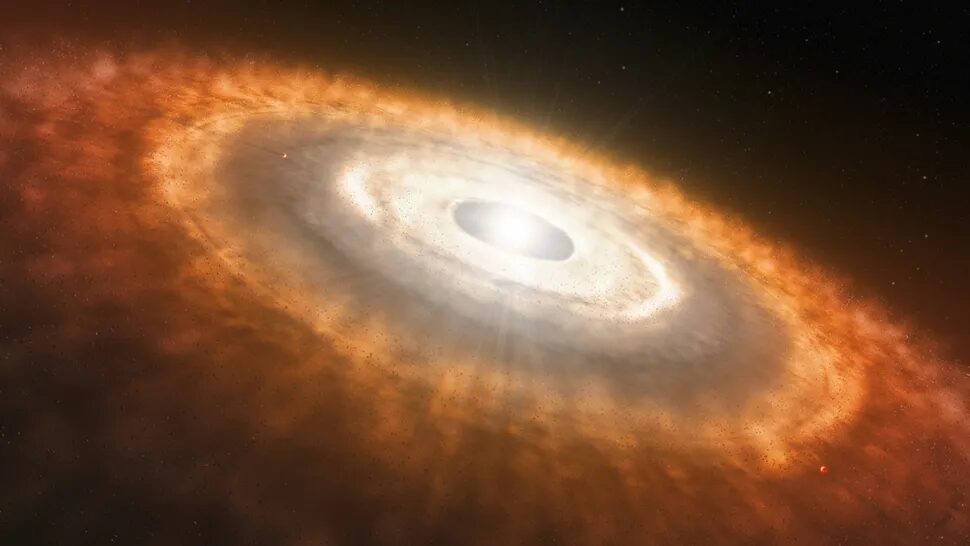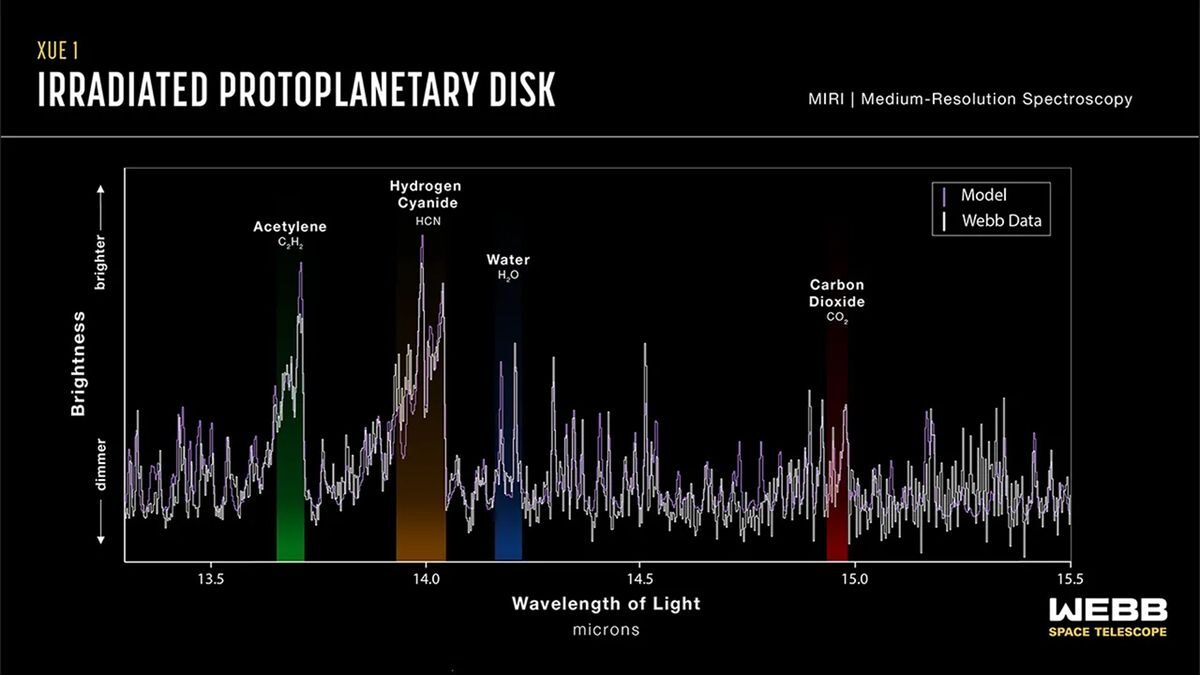
The detection is significant because the water, along with other molecules needed to form worlds like Earth, were found close to several massive, young stars that generate extreme ultraviolet radiation. Such extreme environments were previously thought to be unfit for the formation of rocky planets, but this new discovery suggests that Earth-like planets may be capable of forming in a wider range of cosmic environments than once thought.
The findings could also help scientists better understand how the planets of the solar system formed around 4.5 billion years ago. The research also represents the first results from JWST's eXtreme Ultraviolet Environments (XUE) program, which aims to characterize the environments and chemistry of huge spinning disks of dust, gas and rock that surround stars in their youth and eventually spawn planets, asteroids and comets.
"The JWST is the only telescope with the spatial resolution and sensitivity to study planet-forming disks in massive star-forming regions," team leader María Claudia Ramírez-Tannus, a scientist at the Max Planck Institute for Astronomy in Germany, said in a statement.
Ramírez-Tannus and her colleagues detailed the discovery in a paper published Nov. 30 in The Astrophysical Journal Letters.
James Webb Space Telescope is studying a cosmic lobster

XUE 1 is just one of 15 protoplanetary disks in NGC 6357 — also known as the "Lobster Nebula" and located around 5,500 light years from Earth — being studied as part of the XUE program.
The Lobster Nebula is one of the youngest and closest regions of intense star birth to Earth. It also hosts some of the most massive stars in the Milky Way, which are hotter than stars like the sun and thus emit more ultraviolet light. This radiation helps clear the gas and dust that birthed these young, massive stars, meaning these protoplanetary disks can't survive long around these violent stars; they usually last only 1 million years or so.
The team expected these observations to show that XUE 1 is constantly exposed to high levels of ultraviolet radiation, but they were surprised to discover that the protoplanetary disk is also packed with small, partially crystalline silicate dust that could serve as the building blocks for rocky planets. In addition to this silicate dust and water, the researchers found traces of molecules such as carbon monoxide, carbon dioxide, hydrogen cyanide and acetylene.
"We were surprised and excited because this is the first time that these molecules have been detected under these extreme conditions," study co-author Lars Cuijpers, a researcher at Radboud University in the Netherlands, said in the statement.
Because the conditions found in the XUE 1 protoplanetary disk near massive stars are similar to the conditions found in other star-forming regions close to Earth that are populated with low-mass stars, the team's findings support the idea that it's common for rocky planets across the Milky Way to form around stars of differing masses and in a broader range of environments than scientists had previously thought.
"XUE 1 shows us that the conditions to form rocky planets are there, so the next step is to check how common that is," Ramírez-Tannus said. "We will observe other disks in the same region to determine the frequency with which these conditions can be observed."



Reader Comments
Even the evening weather is all cgi now.
Until he has found a fine single malt scotch in outer space, WTF cares?